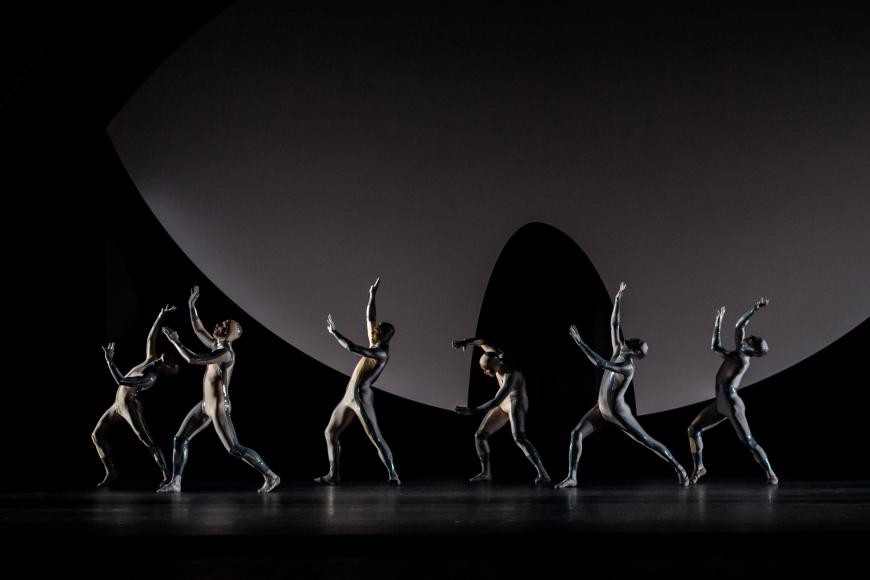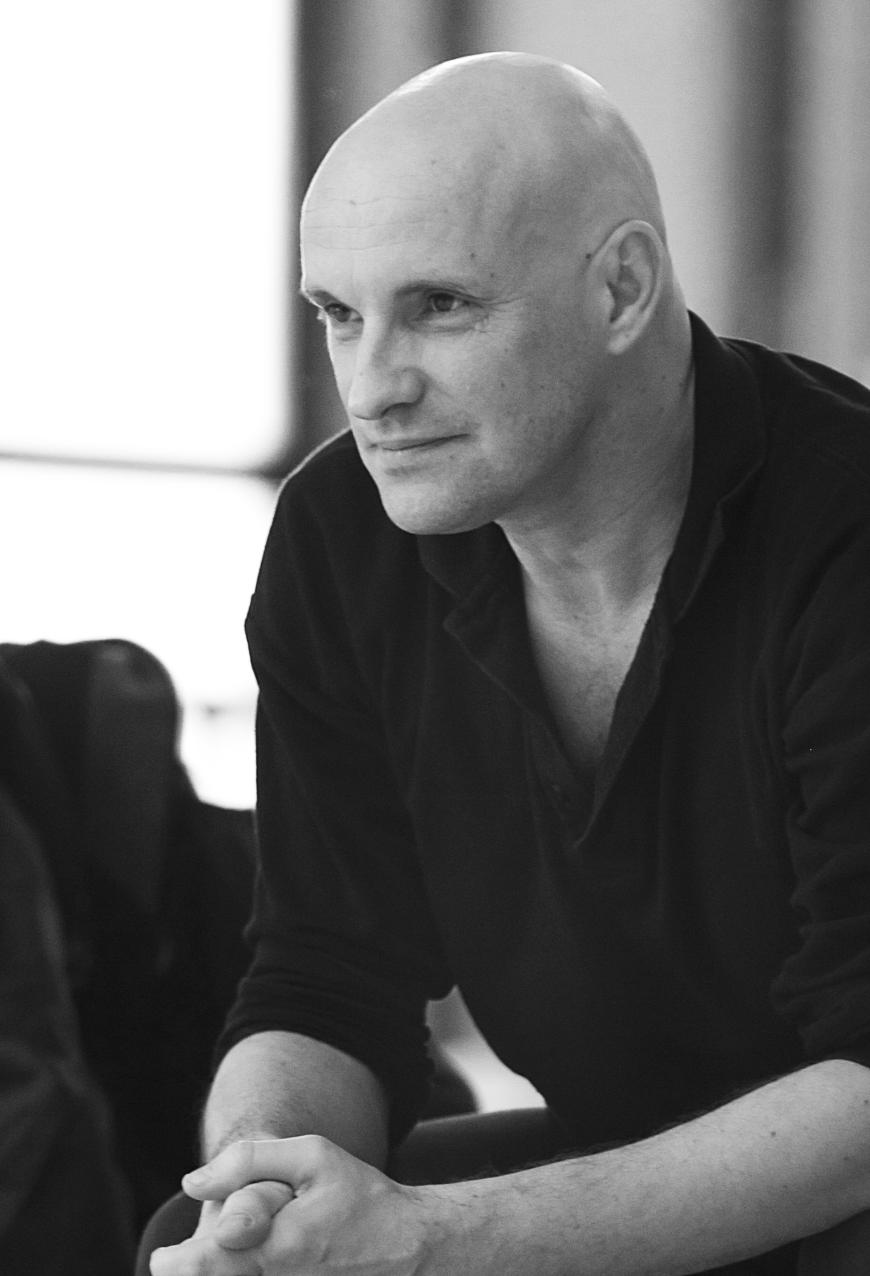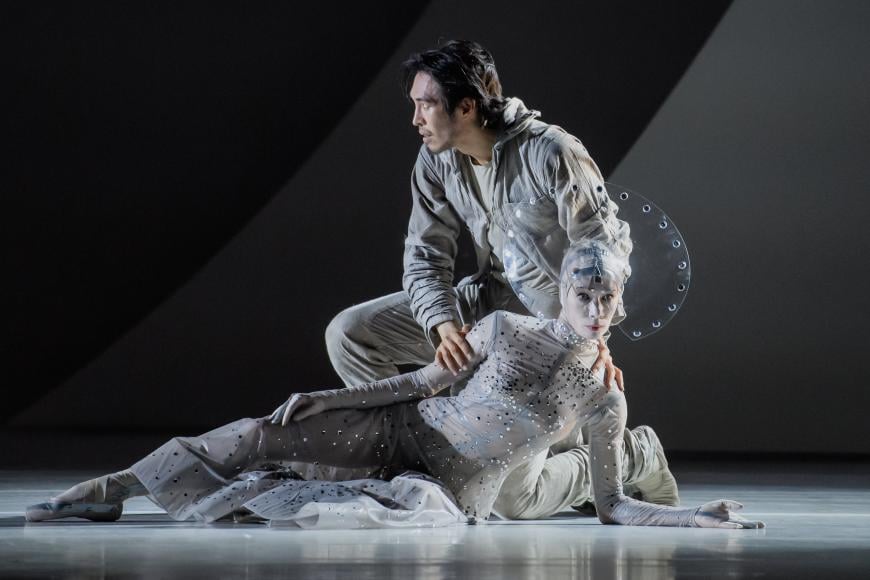
These days, AI is everywhere, even in the world of ballet. For its return to Southern California, Les Ballets de Monte-Carlo will be performing Coppél-i.A., an AI-infused reimagining of Coppélia, the 1870 comic ballet in which an eccentric toymaker, Dr. Coppélius, makes a mechanical doll so realistic that the village youth Franz falls in love with her, infuriating his fiancee Swanilda as a result. The title riffs on the French phrase for artificial intelligence, known in that country as IA (intelligence artificielle).
Coming to Segerstrom Center for the Arts March 7–10, Coppél-i.A., which premiered in 2019, is choreographed and directed by Jean-Christophe Maillot, who has been helming the Monaco-based company since 1993. (Founded in 1985 by Caroline, Princess of Hanover, per the suggestion of her mother, the late Princess Grace of Monaco, the ballet troupe was established to carry on the tradition that began in 1909, when Monaco was home to Serge Diaghilev’s famed Ballets Russes.)
Maillot, 63, has furthered that balletic mission — and then some. Having choreographed more than 80 works, including 40 for his Monte Carlo troupe, Maillot is no stranger to story ballets, putting his own stamp on such classics as Romeo and Juliet (1996), Cinderella (1999), and Lac (Swan Lake), from 2011. With Coppél-i.A., a terpsichorean fusion of tradition and technology, Maillot not only explores the famous Romantic-era ballet, but also challenges the audience to rethink the way that AI shapes society today.

“For me,” said Maillot in a recent phone conversation, “the question that arises with traditional big ballets [is that] everybody knows the story; everybody’s relating to it. If we do a new one, what’s the point of view we can have that makes it interesting? Every [production of] Coppélia that I’ve seen, this lady [Coppélia] sitting on the balcony, was the most uninteresting character of the ballet.
“We’re able now,” added Maillot, “to imagine that we will be able to build an automaton that will almost seem more real. It’s the same as artificial intelligence, and it brings us to the possibility to even go beyond our own capacity.”
Set in the near future, the young lovers, Frantz and Swanilda, have their lives thrown into chaos by an artificial being, one fabricated by Dr. Coppélius. Having their beliefs shaken, along with their love for one another, questions abound: Is the ideal partner one of flesh and blood, or will we fall for a fabricated being — a humanoid — that questions our very status as humans?
The award-winning Maillot explained that his brother Bertrand Maillot composed new music for Coppél-i.A., as well as arranging parts of Léo Delibes’ original score.
“We took the idea of using the music of [Léo] Delibes, which is interesting, and transformed that music with AI and rewrote it. When you listen to it,” added Maillot, “you recognize the music of Delibes, but it’s actually an illusion; it’s completely rewritten, completely original.”
The son of a painter and a set designer, Maillot was steeped in the ways of theater. “Since I’m able to think,” the director recalled, “I have been around painters, writers, opera singers, ballet dancers. My father did more than 300 costume designs for theater, opera, and dance. Being in this environment, I did dance.”
It was his love of dance that also led him to become a choreographer. “The art of choreography, it’s kind of where all the art forms meet: music, stage design, light design, acting, dancing,” Maillot explained. “This is the beauty of being a choreographer.”
The Frenchman admitted that he was fascinated by dancers who could also act. “I was a dancer that used to love to act, and when I realized I had to stop dancing when I was 22, what I was missing the most was not being able to act anymore.”

And thus, his love of story ballets — whether his ballerinas be tutu-clad or sporting slinky, silvery unitards. “Story ballets give me this possibility to bring dance into the reality of human beings,” explained Maillot, “using the capacity of dancers to illustrate steps without words. What a normal human being would try to do in a simple way [becomes] a narrative ballet. I’m interested in human beings, their relations — how do we function through our basic feelings and emotions?”
Maillot is happiest, he added, when the choreography serves the story more than the story serves the choreography. “What’s important,” exclaimed the director, “[is that] it’s a pretext for dance to exist.”
This production of Coppél-i.A., featuring some 50 dancers, sets and costume design by Aimée Moreni, and light design by Samuel Thery and Maillot, marks the fifth time Les Ballets de Monte-Carlo will have appeared at Segerstrom since 2012. The artist cites his relationship with the Center’s artistic advisor, Judith O’Dea Morr, for the success of the collaboration.
“I have a tremendous friendship and respect for Judy Morr. She is the soul of that place. What I love about her is her complete independent attitude towards what she programs. She functions with her heart,” stressed Maillot. “She loves that place, loves the work, [and] she’s proud of showing it. Judy believes in it [and] there’s nothing more rewarding than when people believe in what you do.”

